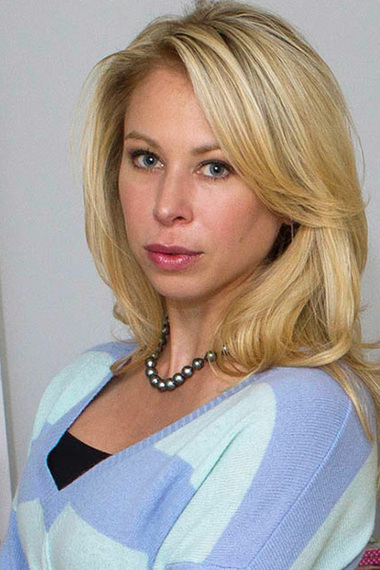 This is an interview with Lisa Gabriella Mehos, a certified yoga instructor and nutritional coach. Lisa began her yoga outreach work volunteering in shelters during college. For the past three years, she has been teaching yoga to inner-city children and survivors of domestic violence in shelters and schools in New York City.
This is an interview with Lisa Gabriella Mehos, a certified yoga instructor and nutritional coach. Lisa began her yoga outreach work volunteering in shelters during college. For the past three years, she has been teaching yoga to inner-city children and survivors of domestic violence in shelters and schools in New York City.
Rob: What originally motivated you to do this work, and what continues to motivate you?
I have seen how yoga service can help people transcend barriers of race, gender, and economic status. My motivation stems from my deep belief that everyone deserves compassion, kindness, equal opportunity, education and security.
While we cannot eliminate the hardships people face in life, we can help empower those in need to overcome obstacles and trauma. Offering yoga in underserved communities provides people with tools to help build confidence, resilience, and a mindset to conquer difficulties and disadvantages, despite the many hurdles they face.
What is the most rewarding aspect of your teaching experience?
Watching transformation in an individual, which might then carry over into the community, is the most rewarding aspect of yoga service. The greatest gift we can offer is sharing the tools and techniques enabling a person to overcome fear, anxiety, depression or other negative reactions to traumatic situations.
By offering an affirmative practice and various exercises promoting virtues, we may help people develop hope, confidence, strength, and gratitude. A foundation built on these virtues can empower them to achieve their fullest potential. For example, one of the major issues facing us and our children today is bullying - not only in schools, but also in the adult world. By adopting a mindful practice, we realize we have the power to control our reaction and our response. Although we cannot control many things that happen in life, we can decide how to react in the face of adversity. We can choose to let cruelty, abuse, and hardship break us down, or we can take each obstacle and use it as a learning experience to make us stronger.
What are some of the things your students have taught you?
One of my favorite quotes is "Never look down on someone unless you are helping him up." My students have taught me that helping someone up has endless possibilities. Each of my students has a gift inside that cannot be bought or taken by anyone. To find it and nurture it, we all need someone to believe in us, stand by our side, and remind us of our intrinsic attributes and abilities.
During one of my classes in a homeless shelter for children, we were sharing something for which we are grateful. One seven-year-old girl said, "I'm grateful that God made us...and I think the reason he made us is he knew we would be nice to each other and help each other."
Another eight-year-old girl, who was in the hospital for a year and a half with cancer, taught me an unforgettable lesson about resilience in the face of fear and suffering. During our discussion on gratitude, this child shared; "My mommy taught me that even when I'm scared that I'll never see my baby sister again, I can never give up. I was living in a hospital with a needle in my back and every day I was so scared that I would never walk or see my mom and sister anymore. But I knew that no matter how much it hurt, I had to be strong, keep fighting, and never give up."
In what ways do you think yoga addresses some of the societal factors at play in the institution or population you work with?
Yoga can address some critical factors for the homeless and those who face trauma and struggle. My classes incorporate affirmations - encouraging people to acknowledge, treasure, and reflect on their own self-worth and attributes. We focus on instilling confidence, compassion, and love, which emanate a powerful force that impacts entire families and communities. One eight-year-old boy living in a homeless shelter said he was grateful he got to go to school every day because he knew he would be so smart he'd be able to take care of his mom and baby brother. By reminding people they are strong, smart, kind, and capable of accomplishing their dreams, we can help our population flourish.
What, in your mind, is the relationship between a practice of mindfulness and greater social change?
Practicing mindfulness brings an element of compassion, gratitude, confidence, and kindness towards oneself. Once a person is mindful of his/her own intrinsic attributes, he/she is able to carry them over to others.
When a yoga practice is presented with the intention to empower individuals, it can result in a transformation of attitude and values. Simply by following the most basic mindfulness practice of gratitude, we can reduce bullying, depression, violence, hopelessness.
One of the most powerful factors of a mindfulness practice in the inner-city communities where I work is that we provide communities with a gift that is already in them. Only they can cultivate it and tap into it to accomplish any of their dreams. Wealth and power cannot buy this gift, or take it from anyone.
What advice would you give to someone who is going to teach in the shelters in which you work? What would be the most important thing for them to carry?
Carry an open heart, an open mind...and a box of tissues!
I'm so full of gratitude it often brings tears. Until someone spends time in these communities, that person may not realize what an honor it is to witness the resilience and love that exists, even in the face of the most egregious experiences and dire living conditions.
What are some of your ideas about, or hopes for, the future of service yoga in America in the next 10 years?
I hope we can expand this amazing yoga service movement to reach far more individuals and communities. With every life we touch, we build strength in the right direction.
Editor: Alice Trembour
Stay connected with Give Back Yoga Foundation as we share the gift of yoga with the world, one person at a time, by following us on Facebook and Twitter, and by subscribing to our newsletter.
Are you a yoga instructor giving back to underserved populations? E-mail Executive Director Rob Schware if you're interested in being interviewed for this series.
